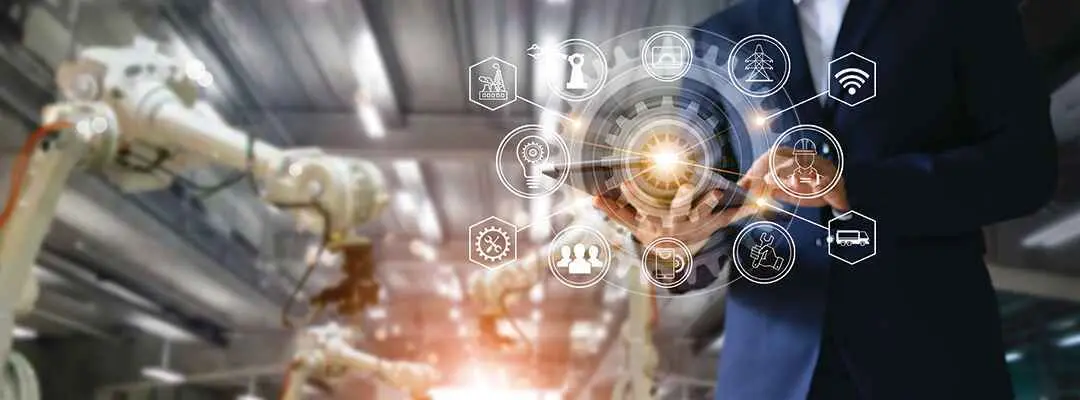
Role of Protocol Simulator in Digital-Twins
Digital twins have revolutionized the way organizations think about their product design and development. This futuristic concept has become one of the major trends of industry 4.0 since IoT and simulator tools have become more and more prevalent. So, what are digital twins, why is it important for organizations, and what is the role of protocol simulators in digital twins? To find out the answers to all these questions, read on.
What are Digital Twins and How do they Work?
Digital Twins are the digital representation of physical objects or procedures. They allow the transfer of data which is collected from IoT devices, sensors, edge hardware, and other embedded devices, thus, replicating the real data transfer process in product development companies. It is a mega model that provides comprehensive information about the physical device along with its mechanical elements, magnitude, and different functional aspects that it encompasses. Digital twins are created with the help of sensors, communication networks, and a digital platform. These virtual models can aid in implementing new technology trends by employing advanced analysis, monitoring, testing procedures, and services.
You cannot understand the system behavior precisely through traditional methods as communication networks have become very complex these days. So, by using network protocol simulation tools, you can develop the networks in real-time. The network is molded with the help of devices, links, and applications to get accurate network performance reports.
Importance of Network Protocol Simulator
A network protocol simulator depicts the model of the real communication network with its application traffic and operating environment. This can help in studying the behavior of real networks under different operating conditions in an economical manner without any kind of risk. However, this network protocol simulator must have adequate fidelity so that the network dynamics are reflected precisely. A reputed digital transformation services provider can run a reliable Modbus master simulator faster than in real-time and offer a wide range of Modbus protocol simulator tools for network visualization, and analysis.
Some common protocol simulators are listed below:
- HART
uSimulate HART helps in simulating the communication protocols, control systems, field devices, procedure flow, and network traffic. HART can simulate HART slave devices efficiently. This hardware simulator can play a crucial role in the verification of host systems such as AMS, DCS, configurators, calibrators, and also allows operator training.
- GE-GSM
GE-GSM Simulation tools are capable of simulating GSM Gateway as well as the GSM protocol version 1-message types. It can frame a Virtual Plant Topology with the help of the Network Topology which is popularly known as the GSM Gateway Configuration tool and simulates different Process Signals along with the Network Traffic.
- IEC-104
IEC-104 simulator is an efficient protocol simulation tool that can support 255 independent client nodes. This slave simulator can test the compliance as well as the performance of your IEC-104 masters by running on multiple platforms. It is a vital aspect in the power grid networks in which the reliability of the process is assured by the efficiency and speed of how the IoT devices share information between them. IEC 104 is a comprehensive communication protocol for seamless communication between the control station and the electrical substation.
Benefits of protocol simulations using digital twin
There is a range of advantages to be gained through the use of simulation, such as:
- Lower Financial Risk
Financial risk is less in simulations as compared to real-life experimentation.The simulator proves to be an economical investment for verification of various host systems like AMS, DCS, Configurators, Calibrators, Diagnostics, etc. In real-world systems, the potential costs include hiring staff, buying new expensive equipment, and much more. Protocol simulation enables you to test theories and prevent costly real-life errors.
- Repeated Testing in exactly the same conditions
Different theories can be tested conveniently by simulations, thus, allowing innovations in exactly similar circumstances. You can even test and compare your innovative ideas without any deviation.
- Gain Better Insights of Process for Improvement
Required improvements can be integrated easily at any time throughout the product development process by testing different theories through protocol simulation.
- Know the Short and Long-Term Impacts
With the help of a Modbus RTU protocol simulation, you can peep into the future by thoroughly analyzing the impacts in the coming years in just a few seconds. It enables you to see both short as well as long-term impacts to make more informed decisions that can prove to be beneficial in the future.
- Assess Random Events
You can assess random events with a protocol simulation like an unexpected staff or supply chain issue.
- Analyze Non-Standard Distributions
You can track non-standard distributions with ease along with analyzing your set parameters. When you take note of all changing parameters with the help of a simulation, you can mimic the real world more accurately.
- Boost Stakeholder Buy-In
A Modbus tcp master simulator can also improve buy-in from your partners, and stakeholders. The results of any procedure changes can be visually demonstrated, thus, improving engagement with the stakeholders or even enabling a sales pitch based on simulation.
In the present competitive age, you must implement this potentially disruptive technology. However, the preciseness of digital twin models relies mainly on the accuracy of the data that is used in designing them. Utthunga is one of the top product development companies having a highly experienced team of professionals who can support projects of any scale and overcome all kinds of challenges with their cutting-edge digital twin technology and best-in-class DevOps Services. Utthunga’s protocol simulators have been created by experts on a world-class simulation framework, uSimulate which is easily configurable and boasts high performance.


